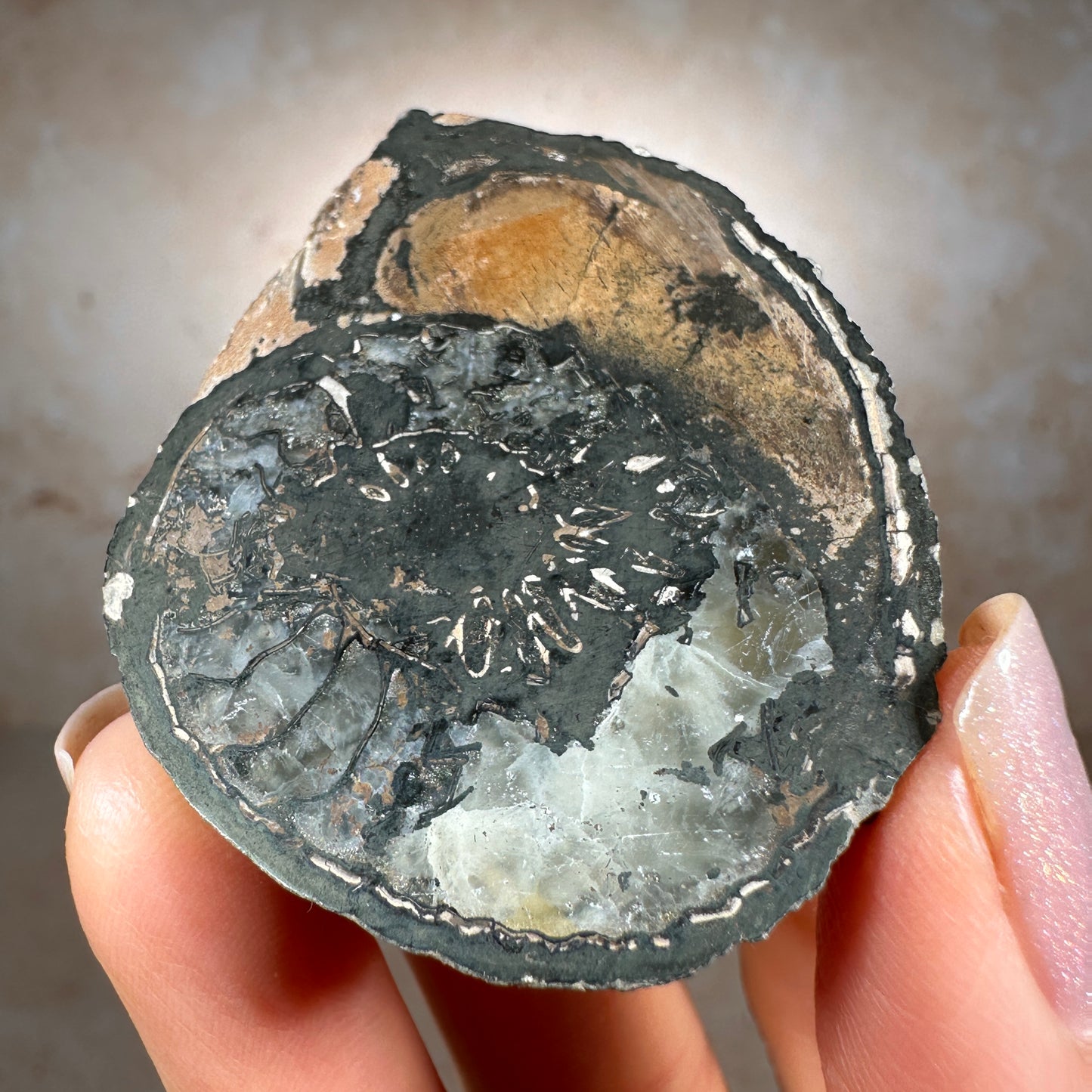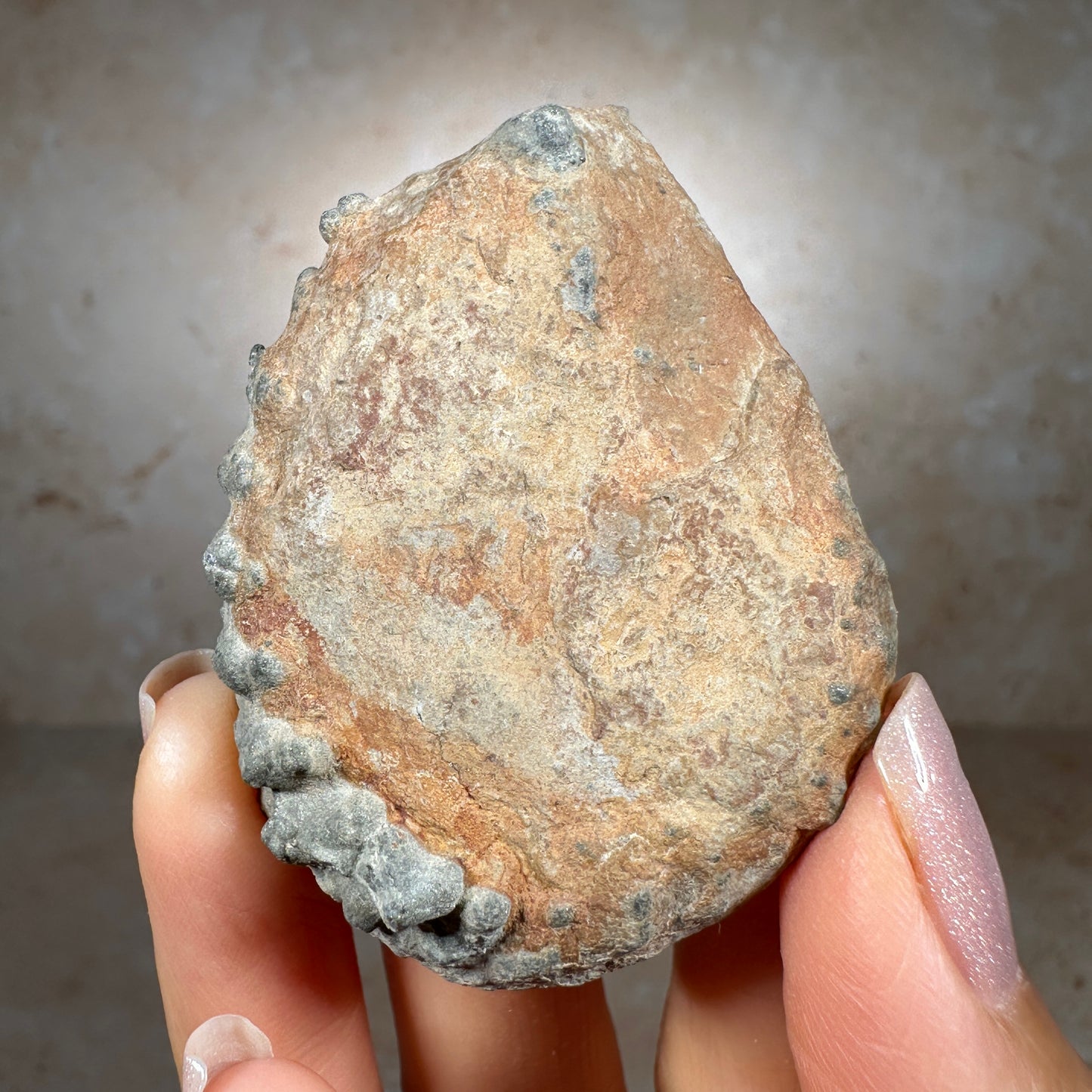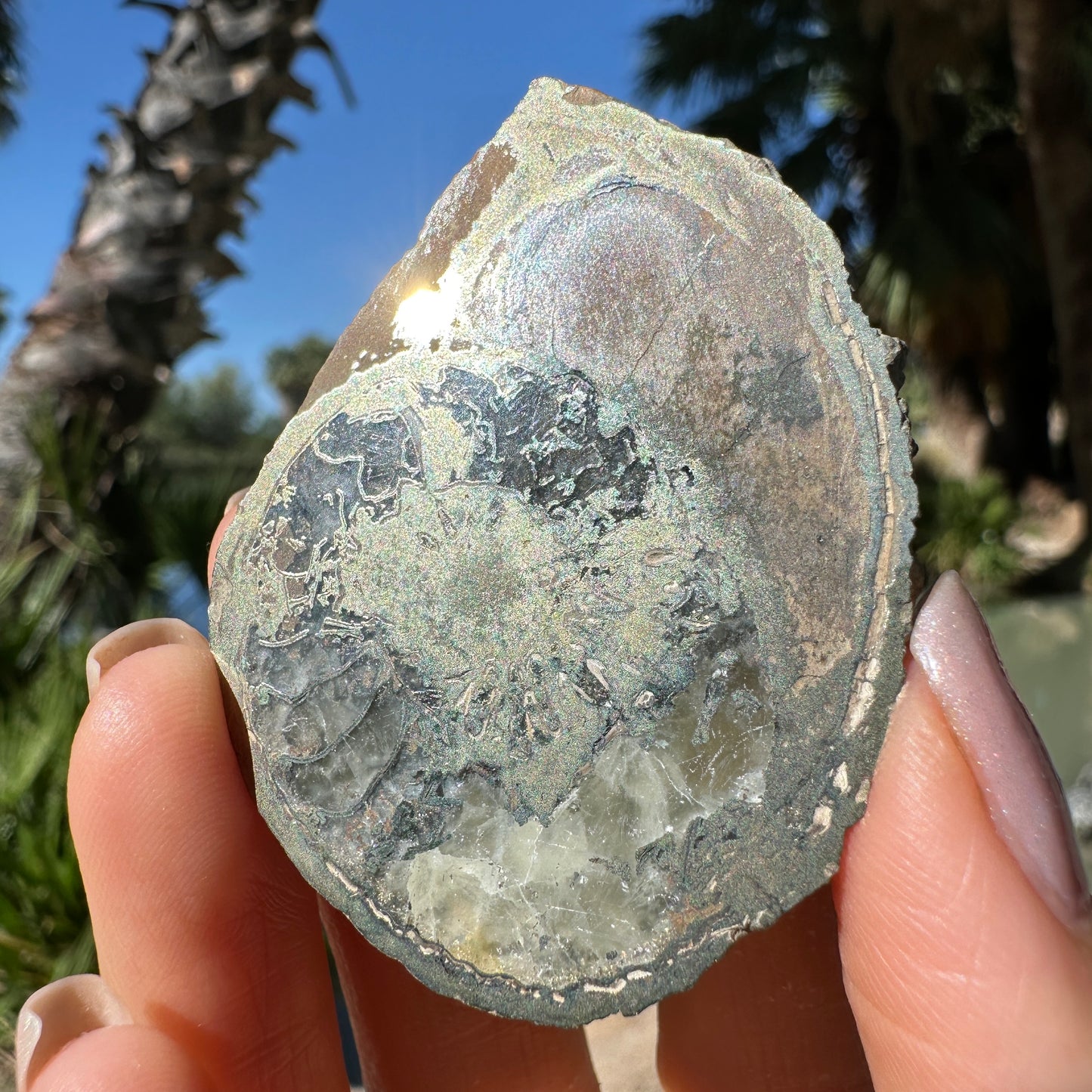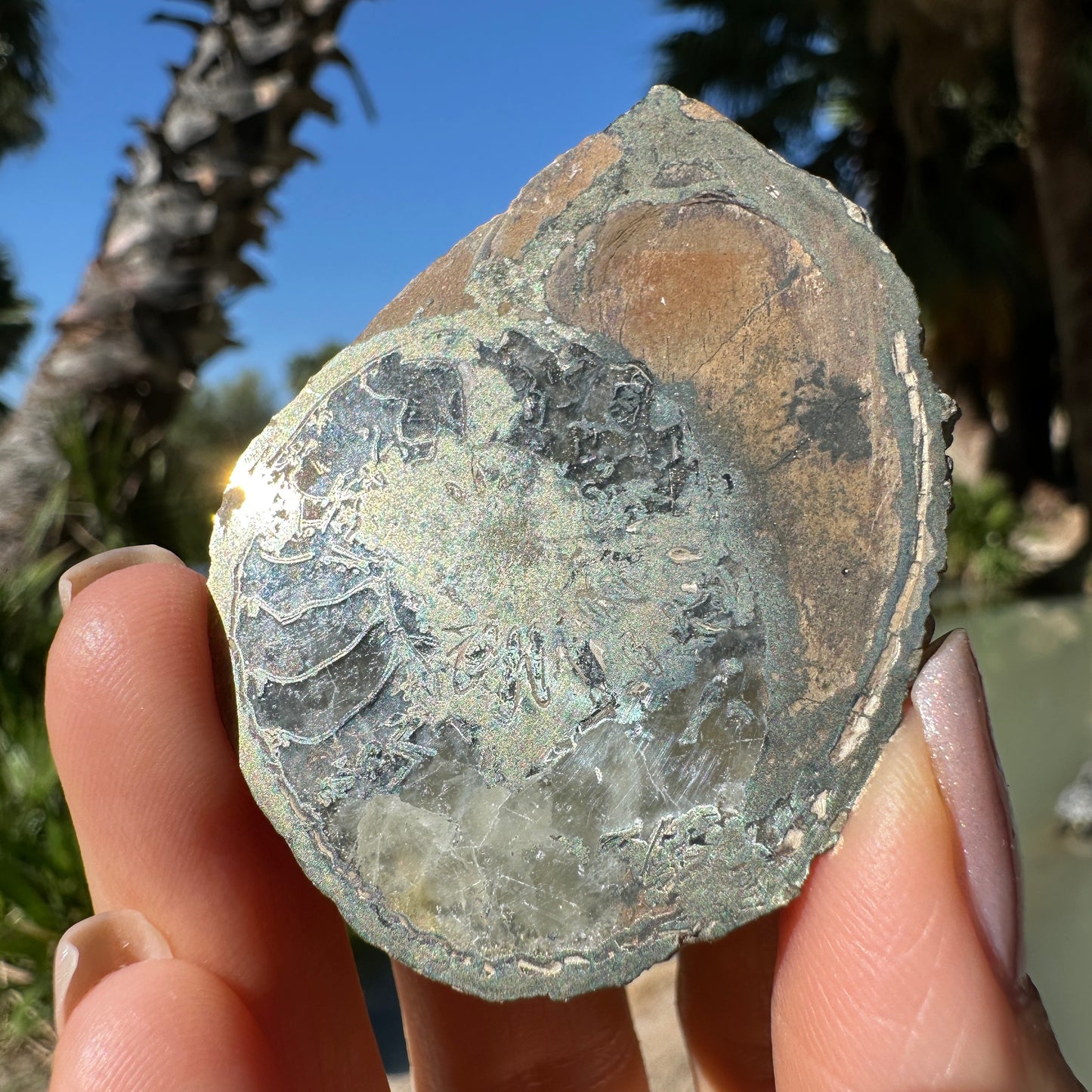Atmosphere Minerals
Jurassic Pyritized Ammonite Fossil (Pleuroceras), Germany, 42g
Jurassic Pyritized Ammonite Fossil (Pleuroceras), Germany, 42g
Couldn't load pickup availability
Gorgeous pyritized agatized ammonite fossil, Pleuroceras spinatum, collected from the Holzbachacker clay pit in Bavaria, Germany. This specimen is cut and polished to expose the pyritized spiral chambers inside.
This ammonite lived about 190 Million years ago, during the lower Jurassic period, in the Pliensbachian stage. The Earth was experiencing warm and humid sub-tropical conditions, including rising sea levels, lush green vegetation was flourishing and these ancient marine mollusks were thriving in the warm seawater. It's believed the same event that caused the mass extinction of the dinosaurs, also wiped out the ammonites.
Pyritized ammonites are a fascinating example of a pseudomorph. But why do some ammonite fossils become pyritized, while others don't? This phenomenon occurs when the ammonite is well-preserved in an anoxic environment, such as being buried in sediment. The lack of oxygen is ideal for pyrite to form and then take over the fossil, replacing organic matter and other minerals.
This famous German locality is known for its heavily pyritized ammonites. They have some heft to them, you can feel the gravity of dense iron pyrite as you hold it in your hand.
- Species: Pleuroceras spinatum
- Category: German Ammonite
- Age: Pliensbachian, Lower Jurassic, 190 Million years
- Locality: Buttenheim, Bavaria, Germany, Holzbachacker clay pit
- Weight: 42g
- Size: 4 x 5.5 x 1cm
*To show the unique details of this piece, we bring it close to the camera lens. This can make some items appear larger than their actual size. For best size assessment, please see size measurements.
Share












